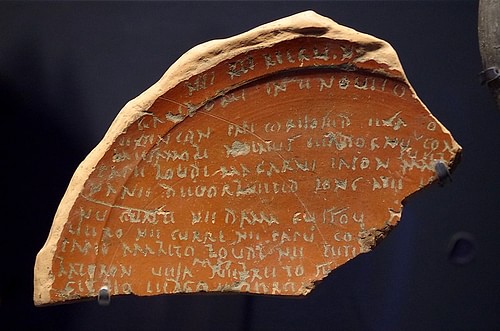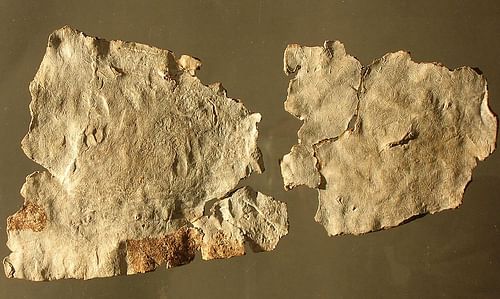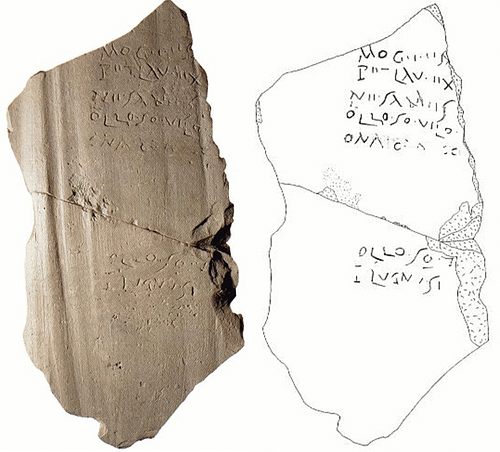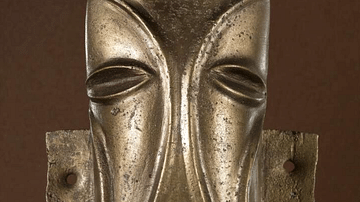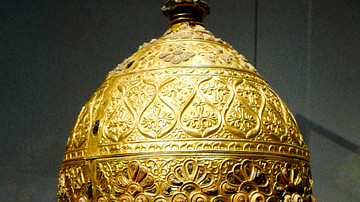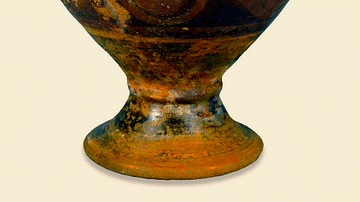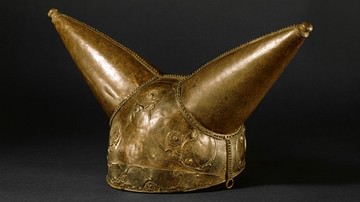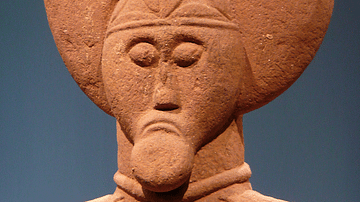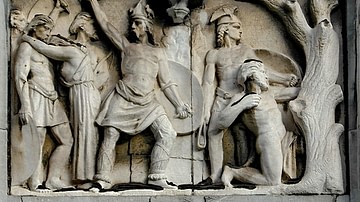The Celtic languages form a branch of the Indo-European (IE) language family. They derive from Proto-Celtic and are divided into Continental Celtic languages (Lepontic, Gaulish, Galatian, Noric, Celtiberian, Gallaecian) and Insular Celtic languages (six living languages: Breton, Irish, Scottish, Gaelic and Welsh; two revived languages: Cornish, Manx).
The ancient Celtic languages were spoken across Europe and Anatolia. Epigraphic evidence, glosses and comments by ancient Greek and Roman writers are the sources providing us with information on the alphabetic writing systems, the structure of the phonological, morphological, and syntactical systems of these languages, as well as the social and cultural tradition.
Proto-Celtic Languages
Proto-Celtic, aka Common Celtic, is a descendant of the Proto-Indo-European (PIE). It has been spoken between 1300 et 800 BCE.
Consonant System Reconstruction
| Plosive | Nasal | Fricative | Approximant | Trill | |
|---|---|---|---|---|---|
| Bilabial | b | m | φ | ||
| Alveolar | t, d | n | s | l | r |
| Velar plain | k, g | x | |||
| Velar labialized | kw, gw | w | |||
| Palatal | j |
Indo-European voiced aspirated stops (*bh, *dh, *gh/ǵh) lose their aspiration and merge with the voiced stops (*b, *d, *g/ǵ), except the voiced aspirate labiovelar *gwh, which did not merge with *gw.
The Proto-Indo-European *p was lost in Proto-Celtic. Before being lost completely, it went through the stages *φ (<*ph) and *h.
Adjacent to consonants, Proto-Celtic *φ underwent the following changes:
- The clusters *φς and *φt became *xs and *xt.
- PIE sp became s in Old Irish and f in Brythonic.
- In Gaulish and the Brittonic languages *p derived as a reflex of the PIE *kw.
- In Late Proto-Celtic, the following changes are observed: plosives became *x before a different plosive or *s; p became b before liquids; p became w before nasals; p became φ (except after *s); ō became ā; ew became ow; ewa became owa.
Vowel System Reconstruction
Monophthongs:
- close front long: i:
- close back long: u:
- close back short: u
- mid front short: e
- mid back short: o
- open central long: a:
- open central short: a
Diphthongs:
- e- with -i > ei
- a- with -i > ai
- o- with -i > oi
- a- with -u > au
- o- with -u > ou
Morphological system
The Proto-Celtic morphological system is constituted of the nominal system and the verbal system.
The nominal system has three genders (masculine, feminine, neuter), three numbers (singular, plural, dual), and five to eight cases (nominative, vocative, accusative, dative, genitive, ablative, locative, and instrumental).
Nouns fall into nine declensions, depending on the stem: *o-stem, *a-stem, *i-stem, *u-stem, velar and dental stems, nasal stems, *s-stem, *r-stem.
The verbal system has at least three moods (indicative, imperative, subjunctive) and four tenses (present, preterit, imperfect, future). Verbs were formed by adding suffixes to a verbal thematic or athematic stem.
Lepontic
Lepontic was spoken in Rhaetia and Cisalpine Gaul between c. 550 and 100 BCE. Lepontic was assimilated first by Gaulish following the agreement of Gaulish tribes north of the River Padus or Eridanus, and then by Latin, after the Roman conquest during the 2nd and 1st century BCE. Some scholars considered it a distinct Continental Celtic language, while others regarded Lepontic as an early form of Gaulish. Still others believed that Lepontic is a 'para-Celtic' Western Indo-European language possibly connected to Ligurian. This point of view was rejected by those who thought that Ligurian is similar to but not derived from Common Celtic.
The 140 Lepontic inscriptions found in northern Italy and Canton Ticino allow us to establish the alphabet of Lugano, which was in use from the 7th to the 5th centuries BCE. The 18-letter alphabet derived from the archaic Etruscan alphabet. It does not make any distinction between voiced and unvoiced occlusives. By contrast, u/u/ and v/w/ are distinguished, and z is probably used for /ts/, θ for /t/ and x for /g/. It is notable that the alphabet of Lugano was also used by other Alpine tribes, like Salassi, Salluvii and Cavare.
Gaulish
Gaulish was spoken by the Celtic inhabitants of Gaul. Gaulish attested in France and in northern Italy are known as Transalpine Gaulish and Cisalpine Gaulish, respectively. Gaulish includes varieties of Celtic that were spoken in Central and Eastern Europe and Anatolia, such as Noric and Galatian. Written records of Gaulish date back to the 3rd century BCE. Indeed, Gaulish personal names are engraved on inscriptions in the Greek alphabet, found mostly in the Rhône area of Southern France, namely in the area surrounding the Greek colony Massalia. However, the first true inscriptions in Gaulish appeared in the 2nd century BCE.
After the Roman conquest of Gaul (58-50 BCE), the writing system of Gaulish shifted to the Latin alphabet. The Latin language was quickly adopted by the Gaulish aristocracy to maintain their political power, which led to a trilingualism in Southern Gaul. In Galatia, an area in the highland of Central Anatolia (the provinces of Ankara and Eskisehir in modern Turkey), the Gaulish language remained steady against the Roman linguistic invasion. No literary and historical source from the 2nd-5th century CE indicates any language replacement. The date of the extinction of Gaulish is unknown, but it is believed that it took place after the fall of the Western Roman Empire.
The Recueil des Inscriptions Gauloises includes more than 760 inscriptions. Among these are counted dedications, epitaphs, proprietary agreements, and legal and magico-religious documents. The Larzac tablet (c. 100 CE) was found in the Commune of Hospitalet-du Larzac in Southern France. The text is written in Latin cursive on a lead tablet and contains more than 1000 letters or 160 words which cannot be translated with any certainty. However, the context of the tablet and the names of the women lead to suggest that it is of a magical nature. The Chamalières tablet (50 BCE to 50 CE) is also a lead tablet. It was discovered in 1971 in Chamalières, at the Source des Rochers, France. The text is written in the Gaulish language with cursive Latin letters.The Lezoux plate is a ceramic plate found in 1970 at Lezoux, Puy-de-Dôme, France. The engraved text is one of the longest ones in the Gaulish language in a Gallo-Latin cursive script.
The most famous one, however, is the Coligny calendar, a 2nd-century CE Celtic lunisolar calendar with a five-year cycle, discovered in 1897 in Coligny, France, now in the Gallo-Roman Museum of Lyon-Fourvière. The calendar is engraved on a bronze tablet, the language is Gaulish, and the letters used are Latin. In the calendar, each week consists of 5 days, each month consists of 6 weeks and either 29 or 30 days, and each year has 12 such months, 354 days in total. A calendar cycle comprises 5 years of this type, 60 regular months plus 2 intercalary months. The five-year cycle has been 1831 days long so that the calendar could remain in synchronization with the lunar phases. This would have made the calendar lose synchronization with the seasons by almost a day every year. According to Roman literary sources, the Celtic calendar had a 30-year cycle. The solar loss problem could have had to do with dropping a month every 30 years. According to Pliny the Elder, each month started on the sixth day of the lunar cycle. The names of the months are the following:
- Quimonios - 30 days
- Samonios - 30 days
- Dumannios - 29 days
- Rivros - 30 days
- Anagantios - 29 days
- Ogronios 30 days
- Cutios - 30 days
- Sonnocingos - 30 days
- Giamonios - 29 days
- Simivisonnios - 30 days
- Equos - 29/30 days
- Elembivios - 29 days
- Edrinios - 30 days
- Cantlos - 29 days
The pottery of La Graufesenque is the most significant source for Gaulish numerals, which are engraved in Latin cursive. The numeral system is presented as follows:
- cintus, cintuxos - "first"
- allos, alos - "second"
- tri[tios] - "third"
- petuar[ios] - "fourth"
- pinpetos - "fifth"
- suexos - "sixth"
- sextametos - "seventh"
- oxtumeto[s] - "eighth"
- namet[os] - "nineth"
- decametos, decometos - "tenth"
Different ordinals are inscribed on some Latin inscriptions (petrudecamentos - "fourteenth" - and triconts - "thirty") and the lead inscription from Rezé dated back to the 2nd century. This inscription was found at the Loire. It is an account or a calculation and contains different ordinals: trilu ("third"), paetrute ("fourth"), pixte ("fifth"), etc.
The vocalic system of Gaulish consists of:
- short vowels: a, e, i, o, u
- long vowels: ā, ē, ī, ō, ū
- diphthongs: ai, ei, oi, au, eu, ou
The consonant system comprises:
- occlusive: voiceless: p, t, k; voiced: b, d, g
- resonants: nasals m, n; liquids: r, l
- sibilant: s
- affricate: ts
- semi-vowels: w, y.
The lenis plosives have been voiceless. The Gaulish phonological system is characterized by the following features:
- PIE voiceless labiovelar kw became p.
- The Proto-Celtic voiced labiovelar *gw (<*gwh) became w.
- PIE ds, dz > /sz/.
- PIE ew > eu or ou > ō.
- PIE ey > ei, ē and ī.
- Intervocalic /st/ > the affricate [ts].
- Intervocalic /sz/ > [str] > [θr].
- Labial + velar occlusives merged into the fricative [x], when attested before /t/ or /s/.
Over the historical period, the following transformation took place:
- ai + oi > ī
- eu merged with ou, both changed into ō
- ei > ē
- i > e
- a stop + s > ss
- a nasal + velar became /ŋ/+velar
- Long diphthongs mostly became short diphthongs and then long vowels.
- Long vowels shortened before nasals in coda.
The Gaulish language used three alphabets:
- the alphabet of Lugano (in Cisalpine Gaul)
- the Eastern Greek (in Gallia Narbonensis)
- and Latin cursive (in Roman Gaul)
The Gaulish have two numbers (singular and plural), seven cases (nominative, vocative, accusative, genitive, dative, instrumental, locative), and five stems: ā-stem, ō-stem, i-stem, n-stem, r-stem.
Gaulish verbs have four tenses (present, future, perfect, imperfect), four moods (indicative, subjunctive, optative, imperative) and two voices (active and passive). The verbal system is characterized by the following transformations:
- IE s-aorist became t-preterit, formed by combining an old third personal singular imperfect ending -t- to a third person singular perfect ending -u- or -e- and subsequent affixation to all forms of t-preterit tense.
- The s-preterit is created from the extension of -ss and the affixation of -it to the third person singular.
- Third-person plurals are made by the addition of -s in the preterit.
Gaulish sentences have the following patterns:
- Subject-Verb-Object
- Verb-Subject-Object
- Subject-Object-Verb
The main clause is followed by subordinate clauses, which are introduced by an inflected element (jo). Jo is also used in relative clauses. In this case, it is equal in function and meaning to "that".
Gaulish has object pronouns and disjunctive pronouns that occur as clitics (mi, tu, id).
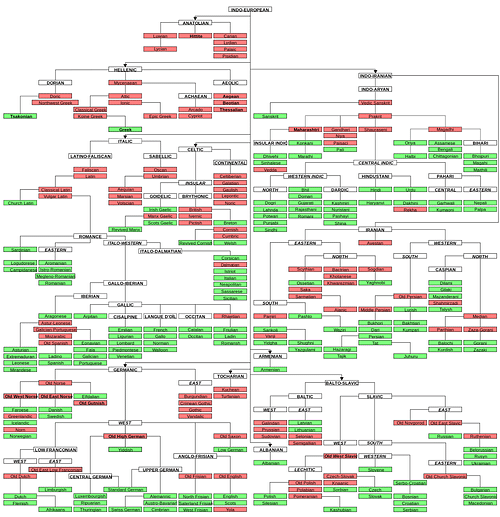
Galatian
Galatian was closely related to the Gaulish language. It was spoken by the Galatians in Galatia, in central Anatolia from the 3rd century BCE up to the 4th century CE. It was introduced to Anatolia by the Celtic tribes, such as Trocmii, Tolistobogii et Tectosages. According to Strabo, the Tectosages of Anatolia were related to the Volcae Tectosages of Gaul. Epigraphic evidence is the only source providing us with onomastic and topographic data. The one and only comprehensive collection of the Galatian corpus to date was produced in 1931. Later linguistic studies showed that many Galatian personal, tribal, divine, and place names are created by combining basic elements found in other names and words common to Gaul Britain and elsewhere in the ancient Celtic world. Basic elements are:
- ad-
- alb-
- ambi-
- ate-
- bit(u)-
- bog-
- boud-
- brig-
- brog-
- catu-
- devo-
- dumno-
- epo-
- gnato-
- maro-
- rig-
- -rix
- sag-
- sin-
- taro-
- tecto-
- teuto-.
To the epigraphic evidence are added glosses and brief comments by classical Greek writers. In these sources, non-onomastic names are certainly attested, such as δροῦγγος ("nose"), τασκός ("badger"), or ὗς ("kernes oak"). Only two of them are of Celtic origin, with ὗς probably borrowed from Greek.
The Galatian language was tenacious and survived in the Hellenistic and Roman periods.
In the 1st century CE, the Galatians spoke Galatian as well as Greek, which was the main means of communication in the eastern parts of the Roman Empire. The Epistle to the Galatians written in Greek by Paul the Apostle shows that the Galatians were already bilingual. A comment by Cicero in favor of the celebrated 1st-century BCE Galatian ruler Deiotarus also proves that at least the upper class of the Galatian society had a good knowledge of the Greek language and culture.
Bilingualism resulted in the introduction of many Galatian words into the Greek language. In the 2nd century CE, the physician Galen of Pergamon reported that the commonly spoken Greek was being corrupted by the use of words from foreign languages, such as Cilician, Syriac, and Galatian.
In the 4th century CE, Saint Jerome remarked that the Galatians spoke aside from Greek a language very similar to that used by the Gaulish tribe of the Treverii near the Rhine. In addition, in the 6th century CE, Cyril of Scythopolis, a Christian monk, recorded that Galatian was still being spoken in his own day. He related that a monk of Galatia was temporarily possessed by Satan and unable to speak; when recovered, he responded to the questioning of others only in his native Galatian tongue.
Noric
The Noric language or Eastern Celtic is attested in two fragmentary inscriptions from the Roman province of Noricum: in the Ptuj (Slovenia) inscription, found in 1894 and written right to left in a northern Italic alphabet and in the Grafenstein (Austria) inscription (2nd century CE), discovered in 1977. The Ptuj inscription contains two personal names: ARTEBUDJ [son of] BROGDUOS.
The Grafenstein inscription seems to be a financial transaction containing a personal name (MOGE), a Latin abbreviation indicating a weight (P II-Iav), a verbal form (NE SADIÍES - "you do not set"), a nominal form (OLLO SO - "this amount") and another personal name (LUGNU).
Celtiberian
Celtiberian or Northeastern Hispano-Celtic was spoken in the 2nd and 1st century BCE by the Celtiberians in the region of the Iberian Peninsula between the headwaters of the Douro, Tagus, Júcar and Turia rivers and the Ebro river. Celtiberian was related to Gallaecian. Celtiberian is attested in almost 200 inscriptions written in Celtiberian script and in Latin. The longest extant Celtiberian inscriptions are those on the Botorrita plaques found near Zaragoza and dating to the late 2nd century BCE. These plaques are known as Botorrita I, II, III and IV. All plaques are written in Celtiberian script, except Botorrita II. Botoritta I consists of a text in eleven lines, on the front face, and a list of names on the back. Botoritta II provides the names of Roman officials. Botorrita III is engraved in four columns on one side of a plaque. Botoritta IV consists of eighteen lines on both sides of the plaque.
The Celtiberian phonological system is characterized by the following features:
Consonant system:
- PIE *bh, *dh, *gh > b, d, g
- PIE *gw > b
- PIE *ḱw > ku
- PIE gwh > gu
- PIE *kw was preserved
- PIE *p > *φ and then disappeared
- PIE *mn > un
- PIE *pn > un
- PIE *nm > lm
- PIE *ps > *ss > s
- PIE *pt > *tt > t
- PIE *gs > *ks > *ss > t
- PIE *gt > *kt > *tt > t
- PIE *st as preserved
Vocalic system:
- PIE *h1e > e
- PIE *h2e > a
- PIE *Ho > o
- PIE *eh1 > ē > ī
- PIE *eh2 > ā
- PIE *oH became ā in non-final syllables and ū in final syllables
- PIE *Hw- > w
Syllabic resonants and laryngeals:
- PIE *ṇ > an
- PIE *ṃ > am
- PIE *consonant + laryngeal + consonant > consonant + a + consonant
- PIE *consonant + consonant + H > consonant + a + consonant
- PIE *ṛ + resonant > ar + resonant
- PIE *ḷ + resonant > al + resonant
- PIE *ṛ + plosive > ri + plosive
- PIE *ḷ + plosive > li + plosive
- PIE *consonant + ṛ + laryngeal + vowel > consonant + ar + vowel
- PIE *consonant + ḷ + laryngeal + vowel > consonant + al + vowel
- PIE *laryngeal + syllabic resonant + consonant > a + resonant + consonant
The Celtiberian morphological system has seven cases (nominative, vocative, accusative, genitive, dative, ablative, locative), two numbers (singular, plural), and five stems (ā-stem, o-stem, i-stem, u-stem, r-stem). The demonstrative pronouns *so:so (M), *sa:sa (F), *soz:soz (N) are attested in the nominative and accusative (M, F, N) in both singular and plural, in the dative and locative (M, F) in singular, and in the genitive (M, F, N) in plural. Celtiberian has a fully inflected pronoun -ios and the particles -kue (< *kwe) "and", nekeu (< *ne-kwe) "nor", ekue (< *h2et(i)-kwe) "also", ve "or". The Celtiberian verbal system presents an s-subjunctive (-se-).
Gallaecian
Gallaecian, aka Northwestern Hispano-Celtic, was spoken at the beginning of the 1st millennium CE in the northwest of the Iberian Peninsula. Under the Roman Empire, this area became the province of Gallaecia. Nowadays, it covers the Norte Region in northern Portugal, and the Spanish regions of Galicia, western Asturias and the west of the province of León.
Local Latin inscriptions and classical authors, such as Pomponius Mela and Pliny the Elder, are the sole sources providing isolated words and sentences as well as anthroponyms, toponyms, ethnonyms, and theonyms. In the light of these data, the following features of the Gallaecian language can be drawn:
- PIE *p became φ and then disappeared
- IE *-ps- and *-ks- > *-xs- > -s
- between vowels, IE *ṇ and ṃ > an, am; ṛ and ḷ > ri, li
- palatalization of *m in the group *-mnV to -unV-
- assimilation *p .. kw > kw.. kw or *p .. kw > kw.. kw > *p .. p
- *-lw and *-rw > -lβ, rβ
- * -φl- > -βl- > -l-
- Proto-Celtic *xt was reduced to Hispano-Celtic *t
- in contact with *e or *i, intervocalic consonant *-g- disappeared
- loss of unstressed vowels when surrounded by liquid consonants
- wo is also attested as wa
- *ew > *ow and > ō
- *ei > ē
